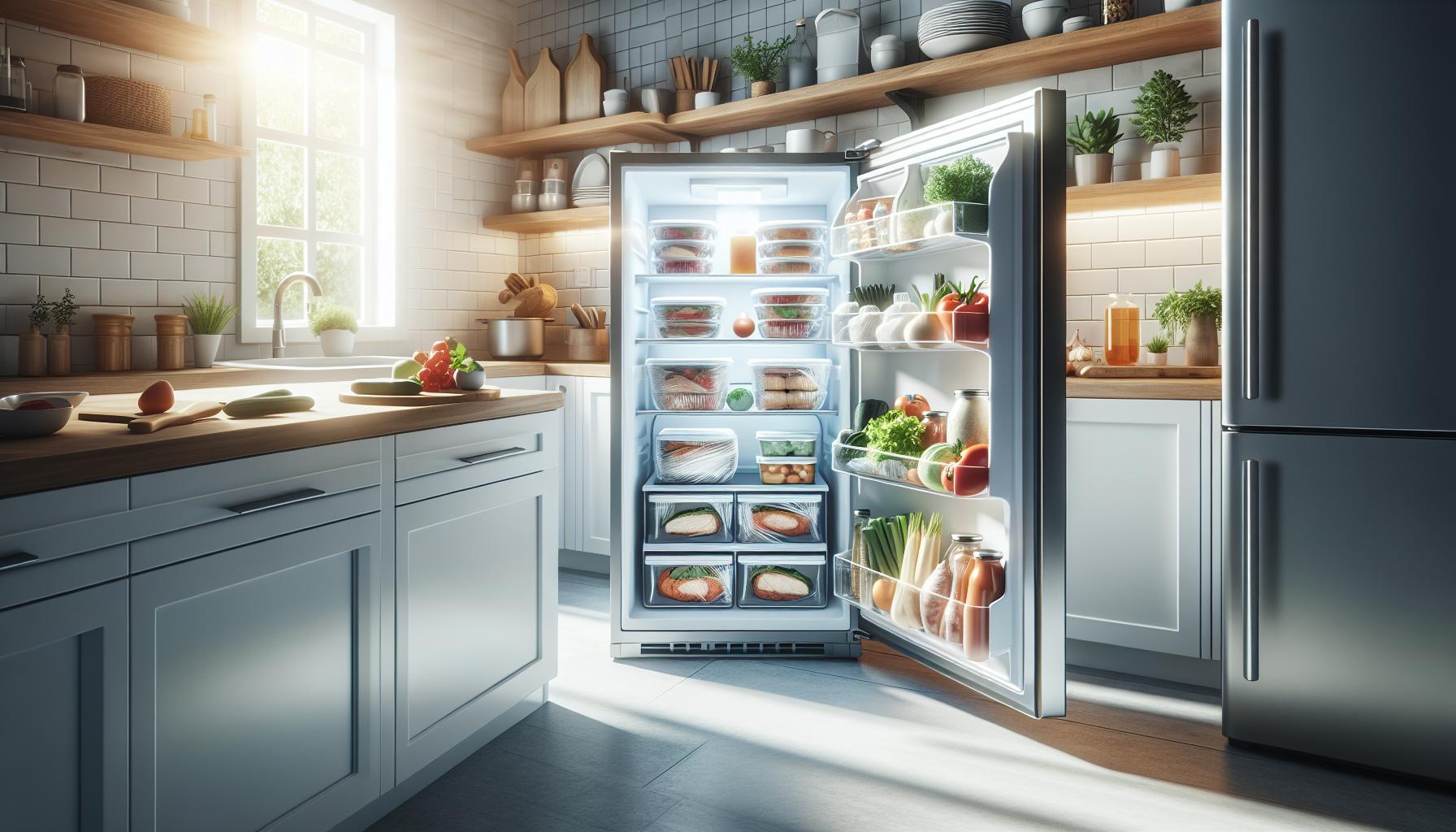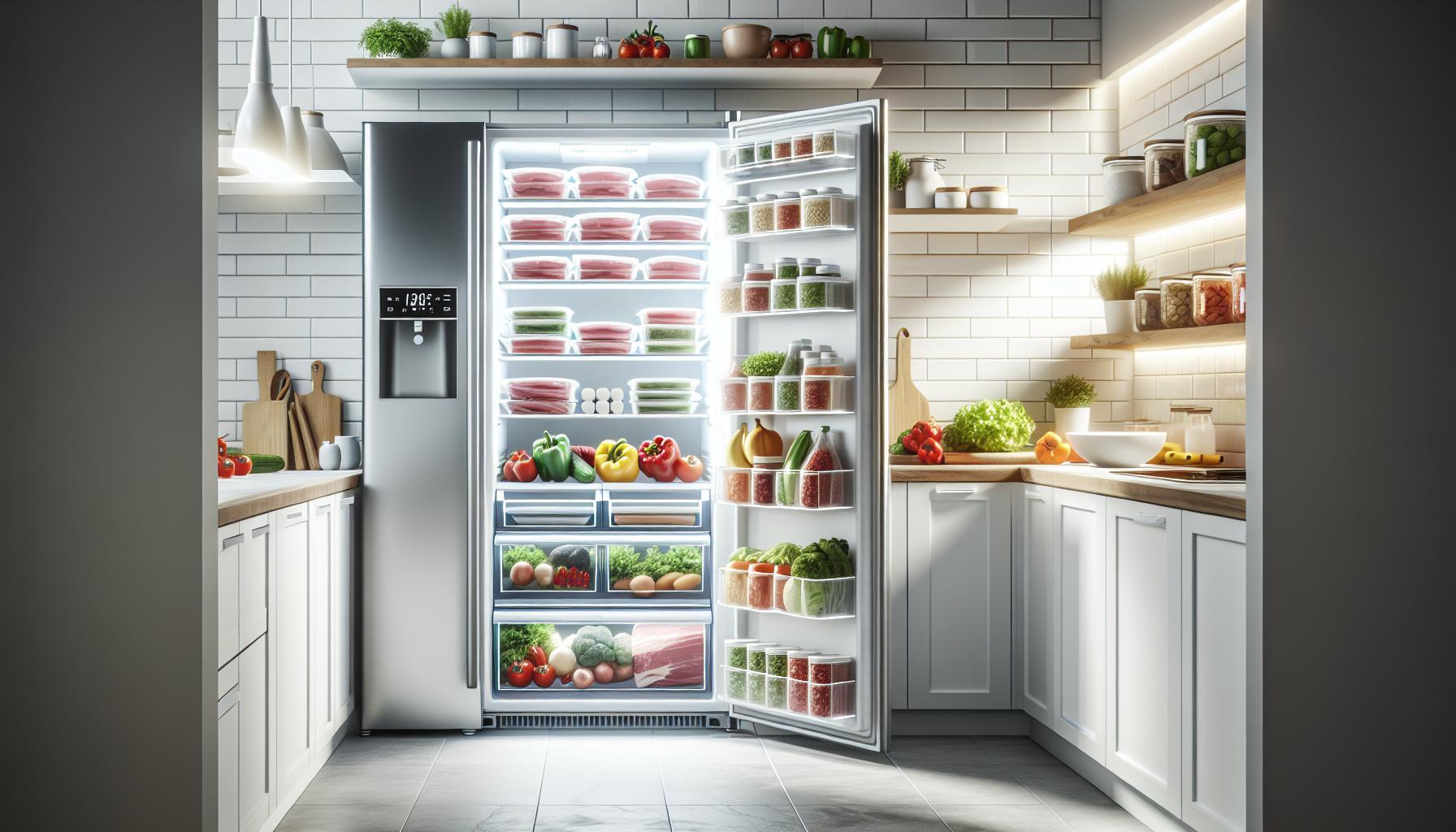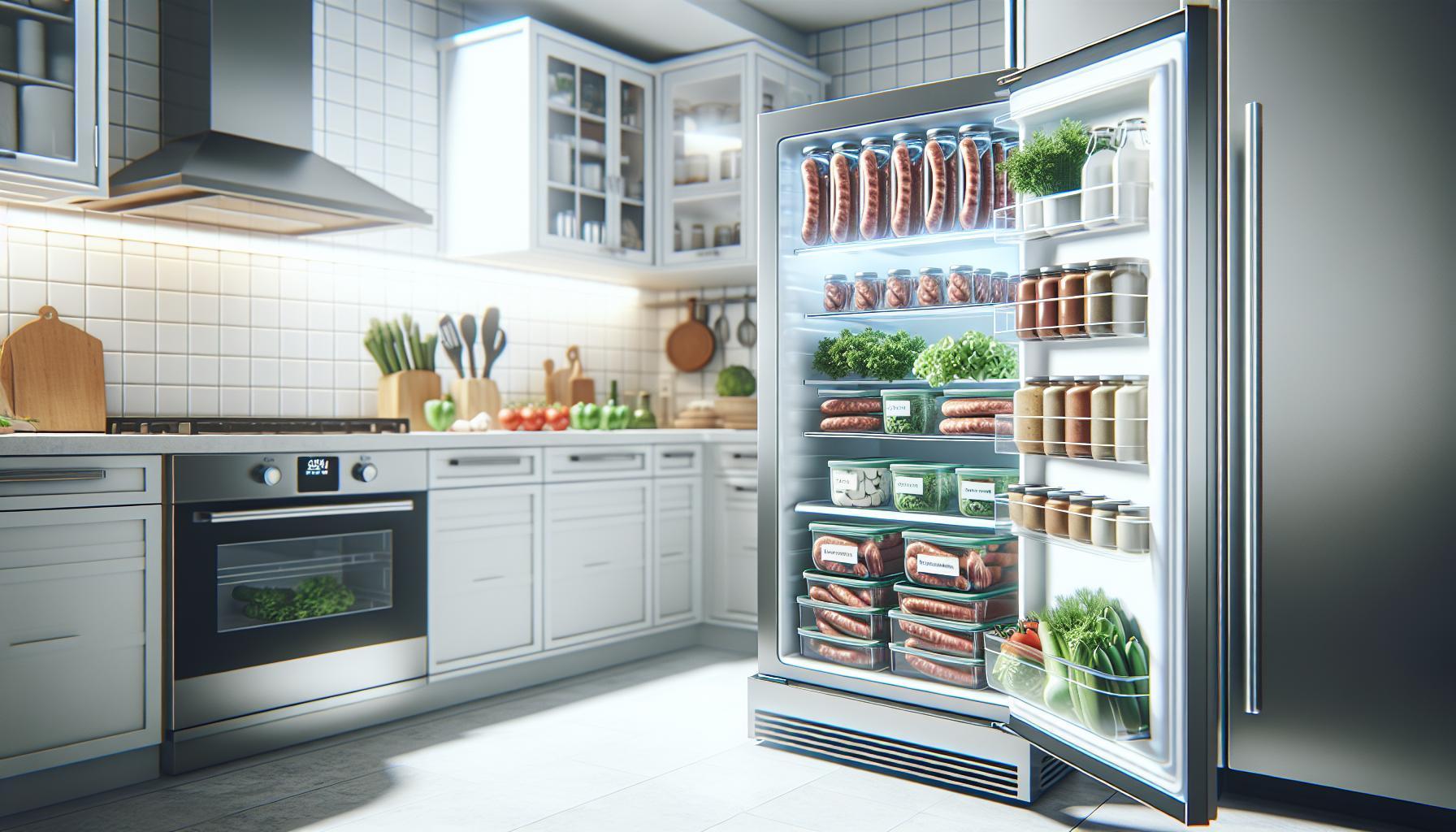Did you know that improperly stored meatloaf can pose significant food safety risks? Leftovers from this beloved comfort food can be easy to mishandle, leading to health concerns due to spoilage or bacterial growth. Understanding how long meatloaf lasts in the fridge helps you not only enjoy it safely but also reduce food waste.
Meatloaf, often made in large batches, is a fantastic meal prep option. However, it’s essential to know the proper storage guidelines to keep it fresh and safe for your family. This article will provide you with clear recommendations on how long meatloaf can be safely stored in the refrigerator, along with actionable tips to avoid foodborne illnesses. Continue reading to ensure your delicious leftovers remain a safe and enjoyable treat!
How Long Can Meatloaf Stay Fresh in the Fridge?
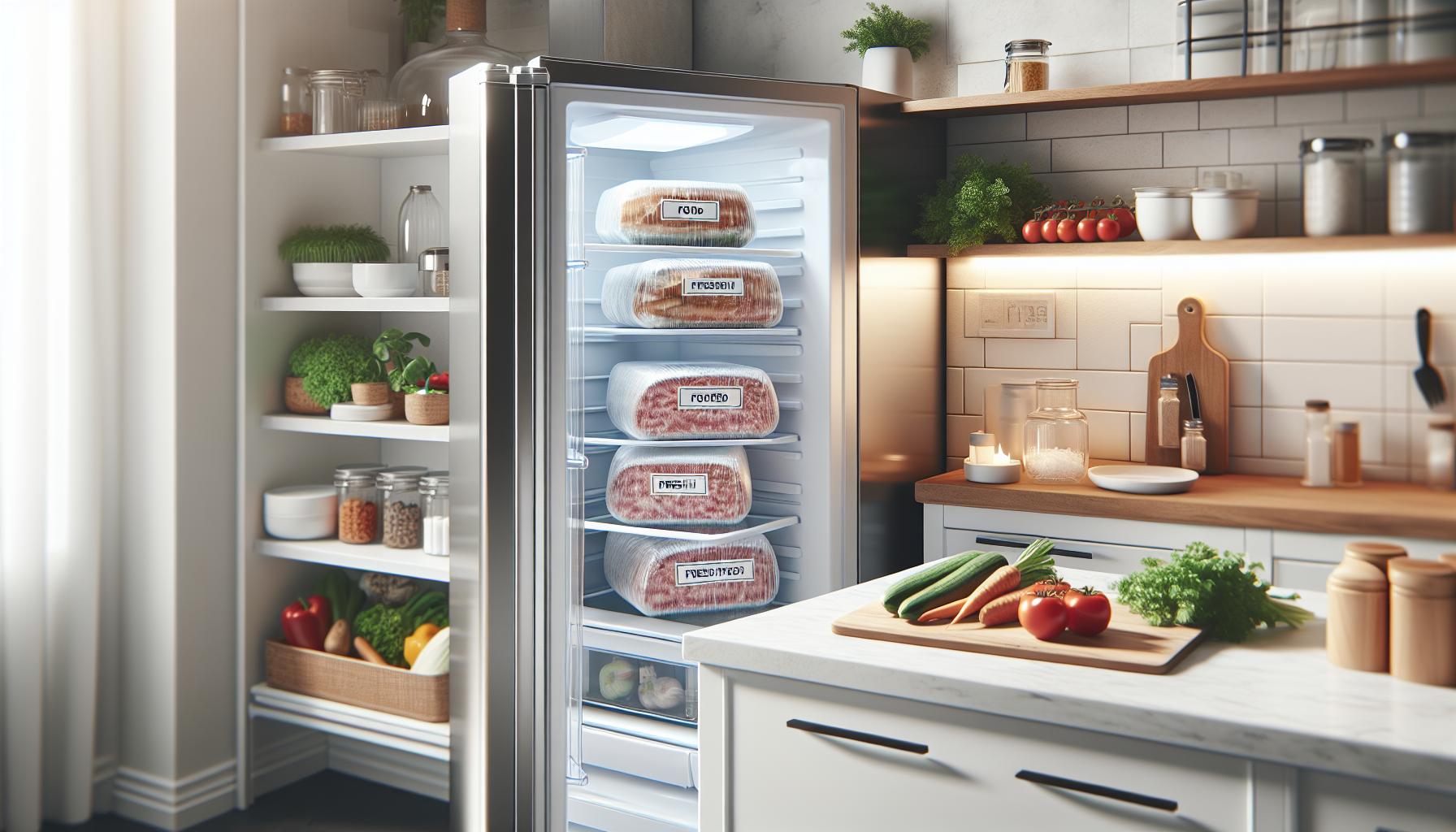
When it comes to meatloaf, knowing how long it can remain fresh in the refrigerator is crucial for both safety and enjoyment. Cooked meatloaf can typically be stored in the fridge for about 3 to 4 days. To maximize freshness, ensure the meatloaf is wrapped securely in plastic wrap, aluminum foil, or stored in an airtight container. This not only helps prevent the meatloaf from drying out but also minimizes the risk of cross-contamination from other foods.
It’s important to cool meatloaf quickly after cooking. Leaving leftovers out at room temperature for more than two hours can increase the risk of bacterial growth, so refrigerate promptly. For longer storage, consider freezing meatloaf. When frozen correctly, it can maintain best quality for approximately 2 to 3 months. To thaw, transfer the meatloaf to the fridge, allowing it to defrost gradually and safely.
Always use your senses as a guide. If the meatloaf develops an off smell, changes color, or shows signs of mold, it’s best to err on the side of caution and discard it. Following these storage guidelines can ensure your meatloaf remains a safe and delicious meal option throughout the week.
Understanding Meatloaf Storage Guidelines
Properly storing meatloaf not only preserves its delicious flavor but also helps prevent foodborne illness. When it comes to refrigeration, cooked meatloaf will remain safe to eat for approximately 3 to 4 days. To maximize its shelf life, it’s crucial to ensure it is cooled and stored correctly right after cooking. Bacteria can multiply quickly if meatloaf is left out at room temperature, so aim to refrigerate leftovers within two hours of cooking.
Storage Guidelines for Meatloaf
- Wrap It Right: Use plastic wrap, aluminum foil, or an airtight container to keep the meatloaf fresh and moist. Proper wrapping also helps to prevent it from absorbing odors from other foods in the refrigerator.
- Avoid Cross-Contamination: Store the meatloaf in a separate area in the fridge, ideally on a shelf that doesn’t share space with raw meats or other uncooked foods. This precaution minimizes the risk of foodborne pathogens spreading.
- Check the Temperature: Ensure your refrigerator is set to 40°F (4°C) or lower. This temperature is crucial to slow down bacteria growth and keep your meatloaf safe for consumption.
Signs Your Meatloaf May Be Spoiled
Before enjoying leftover meatloaf, use your senses to determine its edibility. Look for any drastic changes such as a change in color, development of an off smell, or signs of mold. If any of these indicators are present, it’s best to discard the meatloaf.
By adhering to these simple guidelines, you can enjoy your meatloaf safely throughout the week, minimizing waste and maximizing flavor. Store smart, stay aware, and savor your delicious creations!
The Importance of Proper Meatloaf Cooling
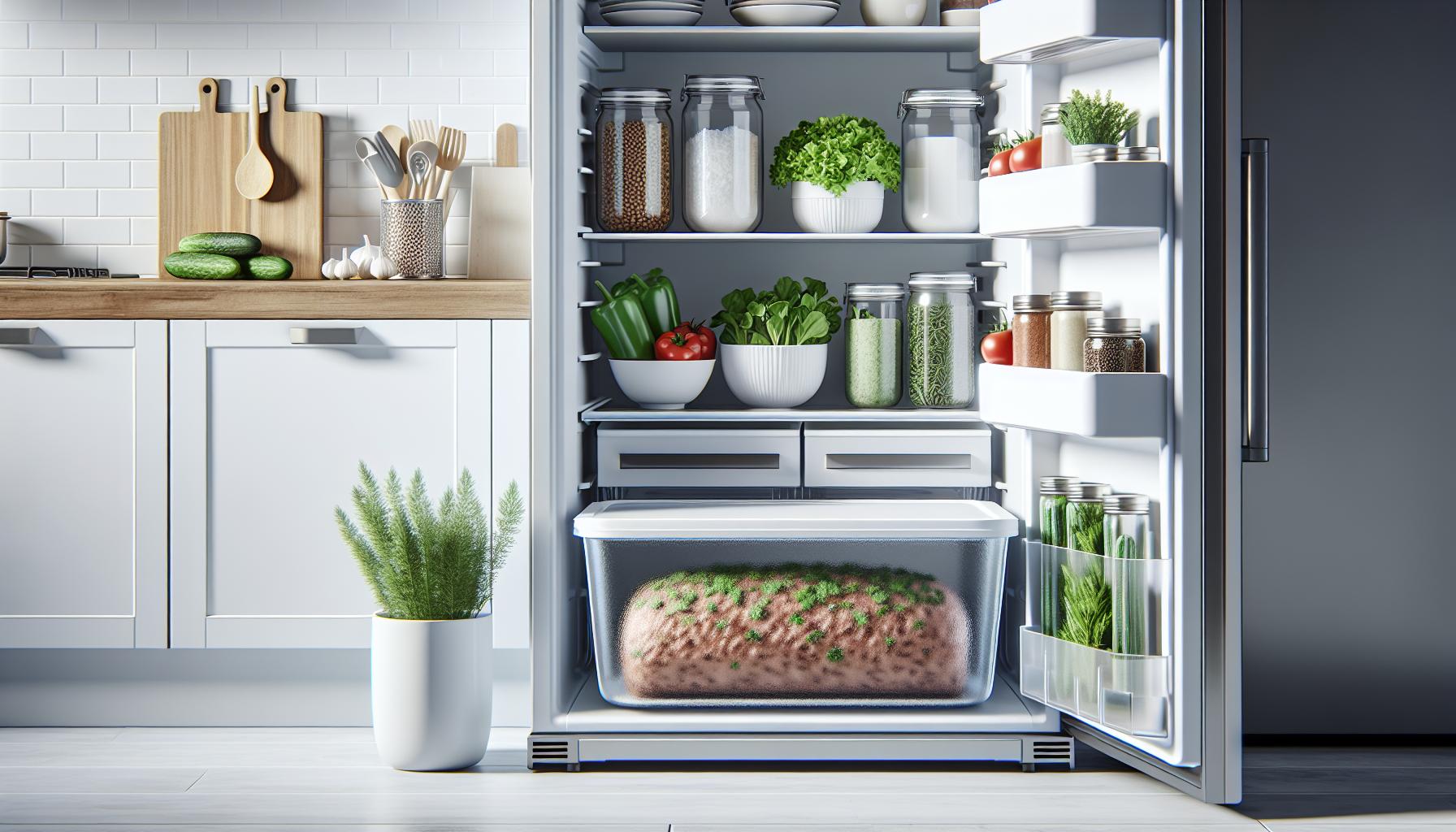
Cooling meatloaf properly after cooking is essential for maintaining its juicy flavor and ensuring food safety. When meatloaf is allowed to sit at room temperature for too long, it becomes a breeding ground for harmful bacteria. The danger zone for food temperature lies between 40°F (4°C) and 140°F (60°C), where bacteria multiply rapidly. To mitigate this risk, it’s crucial to refrigerate leftover meatloaf within two hours of cooking.
To cool your meatloaf efficiently, slice it into smaller portions. This allows it to lose heat more quickly and reach a safe temperature sooner. After slicing, simply place the pieces in an airtight container or wrap them tightly in plastic wrap or aluminum foil. Ensuring that they are sealed correctly not only prevents moisture loss but also keeps your meatloaf from absorbing unwanted odors from other foods in the refrigerator.
While cooling might seem straightforward, proper storage following the cooling process is equally important. Be sure to store the meatloaf at the back of the fridge where the temperature remains consistently lower, ideally below 40°F (4°C). This consistent cooling environment is paramount for preserving the meatloaf’s quality and extending its shelf life, allowing you to enjoy it safely for 3 to 4 days after cooking. By following these cooling and storage best practices, you can enjoy the deliciousness of homemade meatloaf while minimizing the risk of foodborne illnesses.
Identifying Signs of Spoiled Meatloaf

The delightful aroma of freshly baked meatloaf can be comforting, but nothing spoils that experience faster than biting into a piece that’s gone bad. Knowing how to identify spoiled meatloaf is essential to ensure your meals remain safe and enjoyable. While meatloaf typically stays fresh for about 3 to 4 days in the refrigerator, it’s crucial to remain vigilant for signs of spoilage during that time.
One of the most common indicators that meatloaf has spoiled is a change in color. Fresh meatloaf should display a uniform brownish hue. However, if you notice any greening or a grayish tint, it’s likely time to discard it. Additionally, pay attention to texture. If the surface feels slimy or tacky to the touch, this could signal the growth of spoilage bacteria, and it’s best to err on the side of caution.
Another key sign to watch for is odor. Fresh meatloaf will have a savory, meaty scent, but if it produces a sour or off-putting smell, it has likely spoiled and should not be consumed. Lastly, always inspect leftover meatloaf for the presence of mold-any visible mold, regardless of its color, indicates that the meatloaf should be tossed immediately.
When in doubt, remember that it’s better to be safe than sorry. Discarding questionable food items helps prevent foodborne illnesses. Keeping track of how long your meatloaf has been stored is a good habit to develop; if you’re approaching that 4-day window, you may want to consider properly discarding it to ensure your health and safety.
Best Practices for Meatloaf Storage Containers
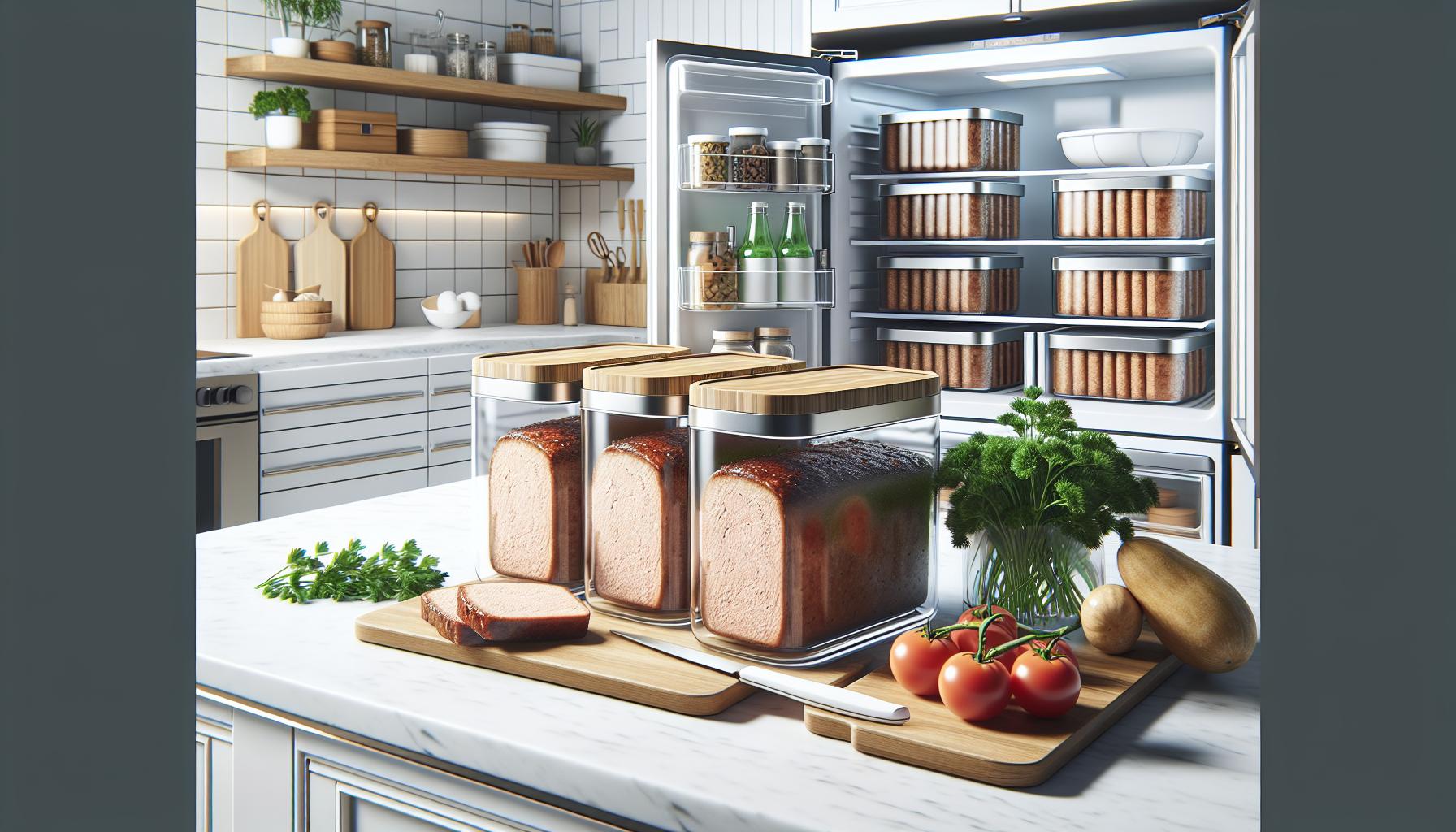
Choosing the right containers for storing meatloaf can significantly impact its freshness and safety. After cooking your meatloaf, it’s essential to transfer it to proper storage containers to inhibit bacterial growth and maintain flavor and texture. The best options for meatloaf include airtight plastic or glass containers with secure lids. These containers not only shield the meatloaf from absorbing surrounding odors but also prevent exposure to moisture and air, which can hasten spoilage.
When selecting a container, consider the size; use one that allows for some headspace to prevent crushing the meatloaf, especially if it’s stored in larger portions. If you plan to store individual servings, opt for smaller containers or consider wrapping the meatloaf tightly in plastic wrap or aluminum foil before placing it in a container. This dual-layer approach adds extra protection against freezer burn if you decide to freeze your leftovers.
For optimal results, always ensure the meatloaf is completely cooled before sealing it in a container. This practice prevents condensation from forming, which can lead to a soggy texture and foster bacteria growth. Label containers with the date of storage to keep track of freshness; meatloaf typically lasts 3 to 4 days in the refrigerator when stored correctly. Adhering to these best practices will help extend the shelf life of your delicious meatloaf while reducing foodborne risks.
Freezing Meatloaf: A Complete Guide
Freezing meatloaf is an excellent method for extending its shelf life while maintaining flavor and texture. With proper technique, you can enjoy your homemade meatloaf weeks after it’s initially made, allowing for convenient meals without the worry of spoilage. When you freeze meatloaf, it can remain safe to eat for up to 2 to 3 months, making it a practical solution for busy weeks ahead.
To freeze meatloaf effectively, begin by allowing it to cool completely after cooking. This step is essential; cooling it down prevents ice crystals from forming during the freezing process, which can affect the meatloaf’s texture. Once cooled, choose your storage method: wrap the meatloaf tightly in plastic wrap or aluminum foil, ensuring there is no unwrapped surface area exposed to air, which could lead to freezer burn. For added protection, place the wrapped meatloaf in an airtight container or a heavy-duty freezer bag. If you’re storing individual portions, slice the meatloaf and separate each portion with parchment paper before wrapping. Label the container or bag with the date to keep track of its freezing period.
When you’re ready to enjoy your frozen meatloaf, the safest way to thaw it is in the refrigerator. This method allows the meatloaf to thaw gradually, maintaining its moisture and flavor. Depending on the size, thawing might take from several hours to overnight. If you’re short on time, you can also use the defrost function on your microwave; just be cautious not to cook it accidentally. After thawing, reheat the meatloaf thoroughly to an internal temperature of 165°F (74°C) before serving to ensure food safety.
Here’s a quick summary of best practices for freezing meatloaf:
- Cool completely: Allow your meatloaf to cool down to room temperature.
- Wrap tightly: Use plastic wrap or aluminum foil with an airtight container or freezer bag.
- Label and date: Mark your storage container with the freezing date.
- Thaw safely: Use refrigerator thawing or microwave defrosting method.
- Reheat thoroughly: Ensure the meatloaf reaches an internal temperature of 165°F (74°C).
Following these guidelines will help retain the quality of your meatloaf while minimizing foodborne risks. Enjoy the convenience of having ready-to-eat meals on hand, and don’t hesitate to stock up on this comforting dish!
Thawing Meatloaf Safely: What to Know
When it comes to enjoying leftover meatloaf, proper thawing is crucial to preserving both its taste and safety. Thawing meatloaf at room temperature can lead to uneven temperatures, which creates an environment that encourages bacterial growth. Instead, the best method involves the gradual temperature adjustment offered by refrigeration, which not only maintains the meat’s moisture and flavor but also adheres to safe food handling practices.
To thaw meatloaf safely, start by transferring it from the freezer to the refrigerator. This approach allows the meat to thaw slowly and evenly, which typically takes several hours to overnight, depending on the portion size. If you’re in a hurry, using the microwave’s defrost setting is acceptable; however, care must be taken to monitor the process closely to avoid beginning the cooking process. Always ensure that the meatloaf reaches a safe internal temperature of 165°F (74°C) when reheating.
Here’s a straightforward guide to thawing meatloaf:
- Refrigerator Thawing: Place the frozen meatloaf in the fridge, allowing 6-12 hours for small portions and up to 24 hours for larger ones.
- Microwave Method: Use the defrost setting, checking every few minutes to ensure even thawing without cooking.
- Cook From Frozen: If time is tight, it’s safe to cook meatloaf from frozen, but be aware that cooking time will increase.
By following these thawing methods, you’ll ensure that your meatloaf remains delicious and safe to eat, minimizing the risk of foodborne illness while maximizing your enjoyment of this comforting dish.
Reheating Meatloaf: Tips for Food Safety
Reheating meatloaf safely is key to preserving its flavor and ensuring food safety. When it comes to leftover meatloaf, achieving an internal temperature of 165°F (74°C) is crucial for destroying any potential bacteria that may have developed during storage. The methods used for reheating can significantly affect both the quality and safety of the dish.
To start, one of the most effective ways to reheat meatloaf is in the oven. Preheat your oven to 350°F (175°C), place the meatloaf in a baking dish, and cover it with foil to retain moisture. Reheat for about 20-30 minutes, checking the internal temperature with a meat thermometer. This method ensures even heating, keeping your meatloaf moist while allowing the exterior to brown slightly.
Microwaving is another quick and convenient option. Slice the meatloaf into individual portions to facilitate faster reheating. Place the slices on a microwave-safe plate, cover with a damp paper towel to prevent drying out, and heat on medium power in short intervals, usually about 1-2 minutes. Remember to check the temperature after each interval, as microwaves can heat unevenly.
For those who prefer an air fryer, this modern appliance can also be a fantastic option. Set the air fryer to 350°F (175°C) and heat the slices for about 5-10 minutes. This method can provide a nice crisp exterior while keeping the inside warm and flavorful.
Regardless of the method you choose, making sure your meatloaf reaches that safe temperature is vital for eliminating foodborne risks. Store any leftovers in shallow air-tight containers to aid in cooling, allowing effective reheating later while ensuring safety and taste.
Can Leftover Meatloaf Be Left Out?
Leaving leftover meatloaf out at room temperature can be a risky decision that might lead to foodborne illnesses. The USDA guidelines recommend that cooked meats, including meatloaf, should not be left out for more than two hours. This timeframe shortens to just one hour if the ambient temperature exceeds 90°F (32°C), such as at outdoor gatherings or during warm weather. Bacteria thrive in the temperature danger zone of 40°F to 140°F (4°C to 60°C), and within this range, harmful microorganisms can multiply rapidly.
Even if the meatloaf appears fine, it could harbor bacteria like Salmonella or E. coli that might not be visible. To ensure safety, aim to refrigerate any leftover meatloaf promptly. Wrap it in airtight packaging, or store it in shallow containers to cool it quickly and effectively. This practice not only minimizes the risk of spoilage but also helps retain the meatloaf’s flavor and texture for future meals.
If you happen to discover that your meatloaf has been left out longer than the recommended time, it is best to err on the side of caution and discard it. Food safety is paramount, and consuming meat that has been at room temperature for too long can lead to health issues. When in doubt, it’s always wise to prioritize your well-being over potential food waste.
Common Foodborne Risks with Meatloaf
Improper handling and storage of meatloaf can lead to serious foodborne illnesses, making it crucial to understand the associated risks. The main culprits behind food poisoning from meatloaf are harmful bacteria such as Salmonella, E. coli, and Listeria, which can thrive if the food is left at unsafe temperatures or not stored correctly. These bacteria can be present even if the meatloaf appears perfectly fine, highlighting the importance of following safe food handling practices.
To minimize the risk of contamination, it’s essential to cook meatloaf to an internal temperature of at least 160°F (71°C). This temperature kills most bacteria, making the meatloaf safe to eat. After cooking, ensure that any leftovers are promptly and properly stored. If meatloaf is allowed to sit at room temperature for more than two hours, bacteria can proliferate quickly, especially in the temperature danger zone of 40°F to 140°F (4°C to 60°C). This is particularly concerning during warmer months or at events where food is left out for extended periods.
It’s also vital to utilize correct storage methods. Leftover meatloaf should be wrapped tightly in plastic wrap or aluminum foil or placed in airtight containers to prevent cross-contamination and exposure to air, which can cause spoilage. Refrigerated meatloaf can typically last three to four days, but always observe for signs of spoilage such as unusual odors, colors, or mold growth. By practicing proper cooking and storage techniques, you can significantly lower the risk of foodborne illnesses while enjoying your meatloaf leftovers.
Extending the Shelf Life of Meatloaf
While meatloaf is a beloved comfort food, knowing how to extend its shelf life can help you enjoy those leftovers safely. Proper storage techniques are essential in preventing spoilage, allowing you to take full advantage of this hearty meal throughout the week. By implementing a few straightforward practices, you can keep your meatloaf fresh and delicious for as long as possible.
One effective way to extend the freshness of meatloaf is to ensure it cools completely before placing it in the refrigerator. This practice not only helps maintain the meatloaf’s texture, preventing it from becoming soggy, but also reduces the risk of raising the fridge temperature, which can adversely affect other items stored inside. For best results, allow the meatloaf to sit at room temperature for no more than two hours before transferring it to an airtight container. Once sealed, it should ideally be consumed within three to four days to ensure optimal flavor and safety.
Additionally, for longer storage options, consider freezing meatloaf. Freezing is an excellent method to extend its life beyond the refrigerator’s limits. Slice the meatloaf into individual portions to make it easier to defrost and use. Wrap each piece tightly in plastic wrap, followed by aluminum foil, or place it in freezer-safe bags, squeezing out as much air as possible to prevent freezer burn. Properly stored, meatloaf can last up to three months in the freezer, allowing you to savor your favorite meal long after you first prepared it.
When you’re ready to use frozen meatloaf, be sure to thaw it safely in the refrigerator overnight or in a microwave using the defrost setting. Reheating meatloaf should always be done to an internal temperature of at least 165°F (74°C) to ensure it is safe to eat. By understanding these methods to extend the shelf life of your meatloaf, you can minimize waste while enjoying this comforting dish at your convenience.
Meatloaf Recipes That Keep Well in the Fridge
Choosing the right meatloaf recipe can significantly enhance how well it keeps in the fridge. Recipes that incorporate moisture-retaining ingredients, such as vegetables and binding agents like breadcrumbs or oats, tend to store better and remain flavorful over time. The key to a successful meatloaf that retains its quality lies in its ingredients and cooking method, ensuring it can stand the test of a few days in your refrigerator.
When selecting meatloaf recipes that keep well, consider options that include grated vegetables like carrots or zucchini, which not only add flavor but extra moisture. Recipes using lean meats, such as ground turkey or chicken, can yield a denser loaf, but balancing them with fattier meats like ground beef can help maintain juiciness. Additionally, many tried-and-true meatloaf recipes include a glaze made of ketchup or BBQ sauce, which caramelizes as it cooks, providing a delicious crust that helps seal in moisture.
Before placing your meatloaf in the fridge, allow it to cool completely to prevent condensation from forming, which could make it soggy. Store it in airtight containers to maximize freshness. Typically, a well-prepared meatloaf can last in the refrigerator for about three to four days. For those who want to enjoy their meatloaf later, slicing it into individual portions before storing can facilitate quicker cooling and make reheating easier.
Popular recipes that excel in refrigerator durability include classic meatloaf and those featuring unique flavor twists, such as adding BBQ sauce or a variety of spices to elevate the taste. Many home cooks swear by using Panko breadcrumbs or traditional oats for superior texture. By following these tips and focusing on proven recipes, you can enjoy delicious, leftover meatloaf safely for several days after it is first cooked, allowing you to savor this comforting dish whenever you please.
FAQ
Q: How long can cooked meatloaf be stored in the fridge?
A: Cooked meatloaf can be safely stored in the fridge for 3 to 4 days. Ensure it is tightly wrapped or stored in an airtight container to maintain freshness and prevent contamination.
Q: Can I freeze meatloaf after cooking?
A: Yes, you can freeze cooked meatloaf for up to 3 months. Wrap it in plastic wrap and then in aluminum foil or place it in a freezer-safe container to protect against freezer burn for optimal quality.
Q: How do I properly cool meatloaf before refrigerating?
A: Allow meatloaf to cool at room temperature for no more than 2 hours before refrigerating. This helps prevent bacterial growth and maintain food safety.
Q: What are the signs that meatloaf has gone bad?
A: Spoiled meatloaf may have an off smell, discoloration, or a slimy texture. If any of these signs are present, it’s best to discard the meatloaf to avoid foodborne illness.
Q: How can I reheat meatloaf safely?
A: To reheat meatloaf, place it in a preheated oven at 350°F (175°C) until it reaches an internal temperature of 165°F (74°C). This ensures it is heated through safely.
Q: Can meatloaf be left out at room temperature?
A: No, meatloaf should not be left out at room temperature for more than 2 hours. After this time, harmful bacteria can grow, posing a risk to health.
Q: How long can meatloaf last in the fridge if it’s not cooked?
A: Uncooked meatloaf mixture can be stored in the fridge for 1 to 2 days. For longer storage, consider freezing the mixture instead.
Q: Is it safe to eat leftover meatloaf after 4 days?
A: It is not recommended to eat leftover meatloaf after 4 days in the fridge. To avoid foodborne risks, discard it and make fresh meatloaf instead.
To Wrap It Up
Now that you know how long meatloaf lasts in the fridge, you can enjoy your delicious leftovers worry-free while avoiding foodborne risks. Remember, properly storing your meatloaf can help it last up to three to four days, but always look for signs of spoilage as an extra precaution. If you’re unsure about food storage practices, check out our articles on maximizing fridge life for different meats and safe reheating techniques.
Don’t miss out on more tips and recipes-subscribe to our newsletter for the latest updates! Have questions or experiences to share? Join the conversation in the comments below! Your engagement helps us bring you the content you love. Explore more on safe food handling and ensure every bite is both tasty and safe!

